The new horizons of radicalisation
by Chiara Sulmoni
The pandemic of extremism
On a global scale, terrorism has (long) tended to make fewer victims, despite a wider geographical spread and the fact that, particularly in Syria and sub-Saharan Africa, the threat has grown. This is the picture drawn by the Global Peace Index (GPI) 2021, which measures the impact of a series of indicators on the peacefulness of nations. The same document depicts an international context where, on the one hand, “the conflicts and crises that emerged in the past decade have begun to abate”; on the other, COVID19 brought about new tensions. Between January 2020 and April 2021, there were more than 5’000 pandemic-related violent events. The economic, social and even psychological impact of the different measures put in place to contain the spread of the virus helped create the conditions for a rise in extremism and in the number of militants and supporters of various causes, including conspiracy theories – be it of a political, identity, anti-technological, no-vax nature – which found their echo in anti-government protests and demonstrative actions, such as dozens of attacks against 5G masts suspected of spreading COVID19; disruptions at vaccination centers; and threats directed at scientists, politicians and even, as occasionally reported in Italy, shopkeepers and restaurateurs requesting their clients to exhibit Green Passes. On the Internet and in the streets, different orientations more frequently happen to coexist and overlap, converging temporarily on common causes and battles and/or driven by the aim of increasing their own visibility and support base.
According to terrorism expert Ali Soufan, in the future law enforcement, analysts and researchers might look to 2020 as a watershed moment in terms of recruitment by non-state actors. It should be emphasized, however, that the significant and progressive increase in protests, civil unrest and political instability has been captured by the GPI since 2011; this is a particularly pronounced trend in the United States, where the scale of the problem clearly came to light on 6th January, 2021 when a diverse crowd of supporters of outgoing President Donald Trump, convinced that they could overturn the outcome of the vote, felt legitimized by the narrative of the “stolen elections” – which was pushed forth by some in the political spectrum and the media – to storm the Capitol. The insurrection against the transfer of power between the two American administrations, which caused five victims and left a hundred others wounded, generated a greater, albeit belated, awareness of the risks associated with an internal extremist drift which has now become a priority issue for national security. The 700 plus individuals who were arrested and prosecuted – including a 12% with a military background, according to data gathered by the Program on Extremism at George Washington University – are a jumble of exponents, supporters and sympathizers of various ideologies and acronyms linked to the worlds of white supremacism, neo-Nazism, armed militias and the conspiracy universe (QAnon above all), who were identified and incriminated also thanks to their activities and interactions, fully visible on social platforms. A substantial part of these citizens did not appear to be officially affiliated to any organization; in this context, some experts today speak of mass radicalization.
The new normal of radicalization, shifting profiles and risks
Twenty years since the attacks of 11th September, which opened a long chapter in the fight against terrorism at the national and international levels that took various shapes – from military interventions to the strengthening of police and intelligence measures, from legislative changes to more interdisciplinary study of the subject, to prevention and de-radicalization initiatives – not only has the threat not vanished; today, it is more widespread, fragmented and complex to deal with. The ecosystem of violent extremism is characterized by strong competition, but also by a growing exposure to the strategies, tactics and “perceived victories” of ideologically distant groups – analysts have not failed to point out, for example, the attention paid by far-right circles to the “success” of the Taliban, whose return to power after a long insurgency doesn’t merely motivate al-Qaeda and / or fighters within the jihadist galaxy, but also other (armed) groups who make “traditional society” their bulwark, oppose liberal values in the West and/or aspire to civil conflict. The proximity and sometimes the cohabitation of themes – e.g. jihadist vis-à-vis Accelerationst – narratives and symbolism does not entail a watering down of ideological principles or beliefs but rather, as one can read in a research on the subject (ICSR, January 2022), “an enhanced focus on results over practice”. With reference to the Salafi-jihadist sphere, in ReaCT2022 Michael Krona also explains that “supporter groups online are expanding the terrorism universe by forming new entities that are less inclined to attach themselves to a single organisation and instead promote wider ideological interpretations (…)“. Today, the production of propaganda and extremist narrative – but also calls for action – are no longer a prerogative of terrorist movements’ media, but an operation which sees the significant contribution of a large base of followers and militants acting on their own, both with regard to the creation of new content – where topics might differ from those addressed by the group’s official channels – and to its dissemination; a large number of indictments and convictions for crimes related to terrorism (not only of a jihadist nature) actually concern activities such as collection, assembly and dissemination of material which might also be useful for planning attacks. Because of this fragmentation, the tech giants’ battle to “clean up the Internet” is far from easy, due to the skills of those “instigators” in disguising the content of posts and accounts; in deceiving algorithms; in migrating from platform to platform (including those popular with youngsters, like TikTok) and in moving along grey areas and through encrypted Apps.
Britain is among the European countries most affected by terrorism and radicalization and for this reason, it anticipates and provides very important data and food for thought. Recently Dean Haydon, Senior National Coordinator for Counterterrorism Policing outlined the new profiles that are changing the equation in the country: in short, according to the latest trend, it’s more common today to come across individuals of British origins or nationality, increasingly young and attracted to the ideologies of the extreme right, who self-radicalize online and act on their own initiative. But 2020/21 data on referrals for suspected radicalisation to the Prevent programme -which steps in when people are thought to manifest early signs of extremism – reveal that 51% of the cases concern “mixed, unstable or unclear ideologies” (MUU). Considering that there’s also a very high percentage, a preponderance even of situations where mental health problems, addiction and/or other difficulties might play a role – making youth particularly vulnerable to online propaganda – violence prevails over ideology as a motivating factor, as a channel for venting personal discomfort and – according to experts – as a means to “acquire significance”. As a remarkable number of people suffering from autism spectrum disorder have entered the Prevent circuit, the Independent Reviewer of Terrorism Legislation Jonathan Hall stated that “it is as if a social problem has been unearthed and fallen into lap of counter-terrorism professionals.” Within this context, radicalization takes on the connotations of a public health problem that must be studied and addressed from a broader perspective than the one adopted till now, which placed a strong emphasis on the role of ideology and consequently, with a view to countering the phenomenon, on counter-narrative. An attack which took place in August 2021 in Plymouth, where a 22-year-old who was familiar with the incel environment shot 7 people before taking his own life, is emblematic of the various nuances that make the task of identifying what new forms of violence represent a terrorist threat particularly difficult. Well-known in the United States and relatively new to Europe, incels are “involuntary celibates”, individuals who fail to establish a relationship with the opposite sex; scholars explain that within this “bubble” – which is also dubbed incel “culture” and is endowed with its own specific jargon – one can come across resentment and hate speech spurring violence against women. More generally, it harbors a mix of misogynist, racist, anti-Semitic and conspiracy beliefs. From March to November 2021, there was a six-fold increase in visits by British users – which include children aged 13 and over – to the three main online forums linked to incel ideology (data collected by The Times with the Centre for Countering Digital Hate). Official statistics say that 2021 set a record in the number of children arrested for terrorist offences.
The new horizons of radicalization are not to be observed solely in the Anglo-Saxon world; with reference to jihadism, the Swiss Federal Intelligence Service in their 2020 Report had already drawn attention to individuals “whose radicalisation and violent tendencies are rooted more in personal crises or psychological problems than in ideological conviction. The frequency of such acts of violence, which have only a marginal link to jihadist ideology or groups, will in general remain the same or possibly even increase.” Within the same year, the first two such attacks in Switzerland took place in Morges and Lugano with the perpetrators – a man and a woman – fitting this description.
Rethinking radicalisation with a view to prevention
Over the past 15 years, security policies and counterterrorism initiatives focused mainly on propaganda and recruitment by al-Qaeda, the Islamic State and related groups. Jihadism does remain the form of terrorism causing more victims; Europol itself reports that in 2020 – possibly also due to the pressure of the pandemic on security forces? – the number of attacks which were carried out exceeded that of foiled/failed ones and more than doubled, compared to the previous year. However, as previously highlighted, there’s today a new risk emanating from a post-organized reality, where militants and (potential) terrorists are only vaguely inspired by the Islamic State; they act independently and alone, yet “exalt” and encourage one another in group, within communities and ecosystems. Outside of the academic environment, this aspect of (re)socialization – the search for a sense of sharing and acceptance, be it in a real or virtual community – is not always sufficiently grasped; yet, it is paramount in order to fully understand the process of radicalization, which lists social exclusion among its most significant triggers. Today, society at large is characterized by similar dynamics of belonging and identification with a movement or cause, in opposition to others; concurrently with strong polarization and growing “social encapsulation”, these are all elements favoring the incubation of extremism. From this perspective, the battle against conspiracy theories and fake news, which are embedded in the narratives of many, more or less violent acronyms – especially those linked to the far-right – acquires strategic significance and calls for more awareness on the part of politics and the media. Due to the many facets of social problems which might lead to violence at this historical moment, it is the time to “rethink radicalization” by paying more attention to the sociological and psychological aspects, with a view to enhancing prevention – which does not consist in repression by means of security / Police interventions in the pre-criminal phase, but rather in being engaged on the ground and in planning activities aimed at strengthening support networks where social and personal hardships may manifest at the local level. As highlighted in ReaCT2021, this approach implies long-term collaboration among different actors (NGOs, public and private institutions, civil society, families) and constant dialogue among researchers, field operators, law enforcement agencies and legislators. Faced with terrorism’s creativity and adaptability, as well as with the new normal of radicalisation which defines the current era, updating approaches and tools at our disposal to counter this threat is of the utmost importance.










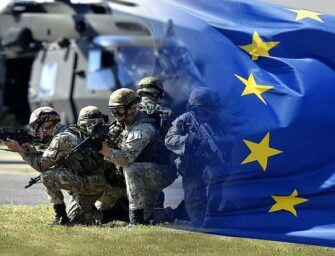



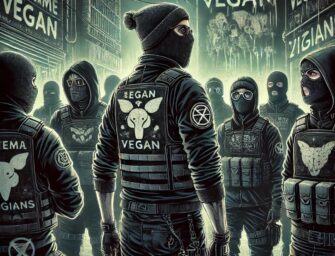





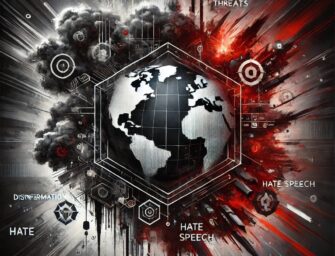



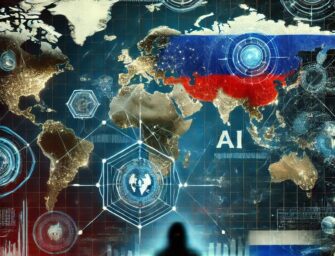






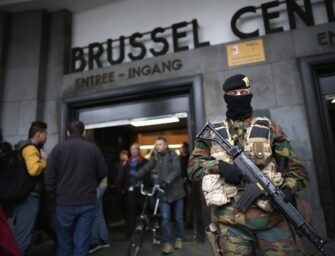


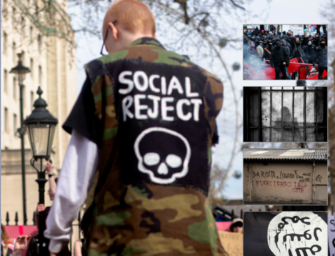

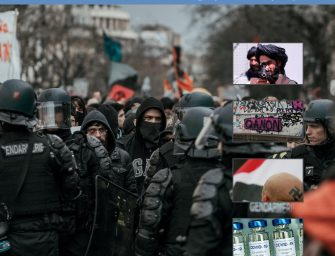


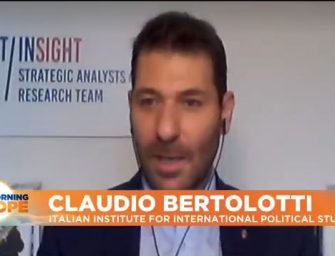



There are no comments
Add yours